Last time in this series, I examined Pasquale Festa Campanile’s La Matriarca. His follow up, Scacco alla Regina (“Check to the Queen” released in English-speaking territories as The Slave) was released the very next year, and in my opinion his magnum opus. This movie is an adaptation of a novel by the same name, written by Renato Ghiotto. I have not read the book yet, so my analysis will be based solely on the film. I may write a blog entry about the source material in the future if I have enough to say about it.
Despite its close relationship to The Libertine, in many ways Queen is better understood as a companion piece to Femina Ridens. Both films explore one single couple in depth, using its participants as allegorical stand-ins for universal relationship characteristics. Where Femina explored the adversarial dynamic between men and women, Queen focuses on the interplay of dominance and submission as they exist independently of gender.
However, Queen is unlike the other two movies in that it was never released to the United States in its own time. For whatever reason, Radley Metzger either missed this one or did not think it was worth the investment to dub in English. I have not been able to find any information as to why this occurred, so I can only assume that he only saw fit to import one foreign erotica per year and Femina was a more attractive acquisition. Barring that, the only other reason I could imagine for intentionally passing on Queen is that the two lovers are both women, and perhaps a purely “lesbian” romance just wouldn’t fly in America yet–even in the swingin’ ’60s.
In terms of quality, these three films are in a league all their own as far as the romance/sex genre is concerned. It almost goes without saying that they blow any US-made erotica out of the water. As far as European offerings go, they represent the pinnacle of everything that made this period of Italian cinema so wonderful. They’re full of timeless observations about sexuality, from helpful lessons in navigating the scene to the multifaceted power balances involved. They are well paced, without wasting a minute. They are full of characters who serve as both archetypes and likable multi-dimensional people in their own right. They have dazzling colors, well-framed shots and the art design is among the best I’ve ever seen. In terms of settings, it really doesn’t get any better than Sayer’s villa, Franco’s flat or (in this outing) Margaret’s mansion. Coincidentally, they’re scored by three of my favorite Italian film composers: Stelvio Cipriani, Armando Trovajoli and (in this case) Piero Piccioni, who may be the best of them all. I cannot recommend Femina Ridens, La Matriarca or Scacco alla Regina enough.
A Slave and Her Queen
Campanile’s follow up is every bit as sleek and sexy as its predecessor, The Libertine, and in terms of craftsmanship I believe it’s worthy to stand among any mainstream classic. In my opinion, Scacco alla Regina represents one of the most beautifully shot, lavishly produced films of all time: a reputation which it has been robbed of, likely because of society’s collective contempt for “sex films.” From the first instance I had the pleasure to watch this film, the question which came to mind was: “why did I have to discover this one myself, through a chance internet rabbit hole? Why doesn’t everyone know about this movie already?”
Where Femina Ridens had Sayer and Maria, who were meant to embody male/female conflict, here we have Margaret and Silvia, who represent dominants and submissives, respectively. I strongly suspect the participants are both members of the same sex in this film specifically so the audience would not assume they were meant to personify gender dynamics. In this way, we’re left to focus purely on the idea of such imbalanced relationships as they could apply to anyone rather than projecting an entire gender onto either character. Scacco alla Regina does not ask us “who has the most power: men or women?” as Femina Ridens and Devil in the Flesh did. Nobody comes into this arrangement with preconceived agendas either, like how Mary always intended to kill Sayer and Severin always wanted to be pushed to his absolute limit by a dominatrix. Queen represents the natural evolution of two people with strong dom and sub tendencies living together over an extended period of time, and that’s what makes it unique among its closest peers in this genre.
Let’s examine our participants in more detail:
Silvia, the Masochistic Slave
Our main character is a subservient, mysterious, rich housewife named Silvia. Through a combination of boredom and undisclosed anxiety, she offers to sell herself out as a servant to the fabulously wealthy movie star, Margaret. This is in spite of the fact that she’s married to a well-off man and doesn’t need to work a day in her life if she doesn’t want to. (In fact, we never see or hear of that man again after the very first scene, demonstrating what a nonentity he is to her.) Silvia’s motivations in performing menial tasks for an aristocrat are an enigma to everyone–Margaret included. To some extent, Silvia is meant to be a blank canvas the audience can project our own experiences with prior relationships and sexual fantasies onto. Why does anyone in any romance actually enjoy being the submissive partner, when it seemingly runs contrary to the greed and ambition which are hard-coded into our animal instincts? Do subs have an ulterior motive? Are they perhaps of unsound mind? These are the questions that Silvia seems to inspire in the other characters–and what Campanile expects the audience to mull over as well.
The only clear picture we ever get into Silvia’s psyche is provided through scattered fantasy sequences where she is progressively stripped of dignity. First, Silvia imagines herself captured, bound and flogged. Then she’s kept in a horse’s stall, with a bit around her head like a pack animal. Later she’s being served to her own Mistress for dinner, and ultimately being released as a free agent. (More on that last scenario later.) Besides these brief glimpses into Silvia’s subconscious desire, the closest we ever come to understanding her mind happens near the film’s climax. Waldman, one of Margaret’s many suitors, asks Silvia some questions about her motivations for becoming a slave. Satisfied that she genuinely enjoys submitting to others, he pontificates on the nature of man to favor predictability over uncertainty and protection over freedom. We would rather willingly submit to a master of our choosing than risk harm or potentially submitting unwillingly to a master we don’t know. This seems to coincide with Silvia’s fear of traffic, which possibly symbolizes the ability of self-determination, albeit among the chaotic and impersonal masses. To drive is to choose one’s own path, but the crowd of other selfish travelers makes that a very tedious, dangerous and ultimately unpleasant experience. (At least as far as Silvia is concerned.)
Far from being a helpless victim, Silvia has learned to manipulate others in order to get what she wants out of life. In fact, while it’s not directly addressed by the other characters, one of the themes of the film seems to be that subs have the power in these types of dynamics. Silvia goes from Margaret’s extraneous new servant to her constant companion in just a few months. At one point, Margaret is ready to cut her loose, until Silvia convinces her to take things a step further instead. Silvia also uses Franco, another of Margaret’s boytoys, as a means to goad her Mistress into punishing her. (And breaking up with Franco, thereby removing him as a competitor for Margaret’s affections!) Silvia may be a slave but she got everything she wanted and more out of Margaret by the time they part ways.
Margaret, the Sadistic Dominatrix
Margaret, in stark contrast, is an open book from beginning to end. She likes to tease her servants, give them unnecessary busy work, make them wear uncomfortable high heels, and remind them always who’s boss. Margaret makes rude comments about her underlings’ bodies behind their back, belittles them in public, and occasionally makes them hit each other for her amusement. She openly admits to having multiple partners at a time in order to keep things fresh, and has shamelessly dated men only for their money. Margaret makes no apologies about any of this either; what you see is what you get. She is the ultimate liberated woman, and perhaps the fully unrestrained id, with limitless resources to satiate her brazen power fantasies. All of this suits Silvia’s desires fine, and over time, through a combination of both women’s natural tendencies towards dominance and submission, a far stranger relationship blossoms between them.
If one has an inclination towards BDSM for themselves, they might take interest in studying how Margaret’s dom headspace compares to Dr. Sayer’s from Femina Ridens. With the latter, it was all about creating an atmosphere of terror, never knowing exactly when he’d overpower you, but always aware he’d eventually kill in the moment of climax. His dungeon is dark and scary, he has graphic pictures of previous victims to get inside your head, and elaborate tortures to punish you with. Margaret’s MO is more akin to the mean girls from high school. She’s always surrounded by a coterie of servants and sycophants; everyone wants to be in her orbit. She is able to assert control by cutting off access to herself, as evidenced by some of her punishments towards Silvia. (Solitary confinement and ultimately selling her off.) Instead of the fear of imminent death, Margaret’s scenes typically involve public shame–especially the statue incident and auction. She delights in humiliating everyone, from servants to lovers, in front of each other. (To know that they’re lower on the totem pole, further away from Margaret than their peers, is salt in the wound.) Margaret knows everyone wants to be her, that they’ll suffer many indignities to go on living vicariously through her, and takes full advantage of that. She has the personality of a natural born leader, someone that others naturally gravitate towards. Sayer, for all his bluster, is afraid of women and is compensating for that.
Margaret’s power is perhaps best understood from watching the scenes with her other personal assistant, Dina. Dina is Silvia’s old friend, the one who gets her a job as Margaret’s servant in the first place. Unlike Silvia though, Dina is self-described as poor, and must bear the indignities of Margaret’s employ in order to survive. It is through Dina’s eyes that we understand how the rest of Margaret’s employees view their boss–with a mixture of awe and barely concealed resentment. Despite knowing that her mistress is an objectively terrible person though, Dina is always trying to suck up to her. She compliments Margaret’s weight loss only to be dismissed as “an idiot” minutes later in front of Silvia. When it’s Silvia who’s taking the brunt of Margaret’s punishments, Dina is quick to pile on and visibly elated to see that she’s “above” someone else. She eagerly offers suggestions on how to torture Silvia, which Margaret either shoots down or ignores. (That doesn’t stop Dina from trying again the next time, though.) Despite having every reason to hate Margaret, Dina can’t stop herself from gushing about her at times, almost like a case of stockholm syndrome. Sayer may have inspired terror, but Margaret inspires a twisted loyalty and reverence from her underlings. It’s the difference between the Bolsheviks murdering their Czar and the Maoists forcibly brainwashing their own Emperor to be a full-fledged Marxist.
Using Art Direction to Tell a Story
The biggest advantage Queen has over its closest relatives in the ’60s erotica/BDSM camp lies with its purposeful use of art direction. Now, all of these films are deliciously stylized of course, but this one takes it just a step further. It’s not only dripping with exquisite interior decorating and costumes, but psychedelic imagery as well! I still remember watching it for the first time with my very good friend. When the opening credits started playing over a series of vibrant cross-fading Rorschach tests and Piccioni music, I knew immediately that we were in the presence of an overlooked masterpiece. Not only is it visually appealing, but the ink blots communicate to the audience that what we’re about to see represents an exploration of human psychology. There’s a motif in the film of Silvia looking at herself in mirrors, which Margaret calls our attention to several times. (She disdainfully confides to one of her lovers that Silvia always looks at herself in the mirror, she has the mirror removed from Silvia’s room to punish her and in their final interaction tells Silvia “you can’t keep looking at yourself in mirrors.”) I always interpreted this as Campanile urging the audience to examine ourselves, consider our own psychology and sexuality. He did not want us to dismiss Silvia as a lone freak, he wanted us to acknowledge that there’s a little of her submissiveness in all of us. (Or, if not that, then a little of Margaret’s unabashed desire to dominate others.)
Unlike many other films of this era, which use crazy neon filters and trippy camera effects with little rhyme or reason, The Slave has a method to its madness. Notice how the kaleidoscopic overlays are only ever used when we’re being shown one of Silvia’s masochistic fantasies. This allows the audience to easily distinguish between what’s objective and what’s subjective. (I have to say, after watching numerous pretentious and/or messy films in the same vein as Jesus Franco’s Venus in Furs or Metzger’s own The Lickerish Quartet, that was a welcome change.) For that reason, I always felt as though the lysergic elements in Queen were purposefully applied rather than a lesser filmmaker’s shallow attempt to appear “deep” and “thought-provoking” without a coherent script.
However, while the film never obscures our sense of objective reality, this does not come at the expense of meaningful ambiguity nor open-ended analysis by the viewer. There is still plenty of room for the audience to uniquely interpret the characters’ subjective worldviews and how that influences their actions. The rainbow color scheme connects the fantasies with the aforementioned Rorschach-laden opening credits, which hints that these scenes are a window into Silvia’s subconscious mind. This encourages us to dig deeper in these moments and decipher what they reveal about her motives and perceptions. The various overlaid hues may also be a visual metaphor for the fact that we will never have a definitive picture of who Silvia is: each of us will “color” her with our own psychological biases. In addition, upon subsequent viewings, I’ve noticed that there are several instances where Margaret is in the frame along with a blurry, vibrant object in the foreground. This has the effect of mimicking the “blots of color” visual cue of the fantasy sequences, suggesting that perhaps Silvia’s dreams are merging with reality. In other words, being Margaret’s slave is the closest she’s ever come to living out her secret desires.
Check to the Queen is just on a whole other level as far as cinematography and art design goes. It’s up there with Vertigo in terms of the most thoughtful use of color I’ve ever seen in a motion picture. Based on the limited body of foreign films I’ve seen thus far, Pasquale Festa Campanile is my favorite of the Italian directors. His work deserves more praise than it’s given, because I would rank his best ’60s films alongside anything by Orson Welles or Stanley Kubrick. I don’t know why his name is never listed among the greats, but if it’s because he directed adult features as I suspect, then that’s a tragedy. It’s the ultimate example of society’s hypocritical attitudes towards sex robbing us of the full beauty and depth of the human experience. As prudish as some people are about “sex films,” Campanile’s “sleaze” is still better than most other directors’ attempts at “high art,” so ultimately the joke’s on them.
Did They Really Love Each Other?
Unlike the other fantasy sequences, which are populated by mysterious characters, exaggerated costumes and universally humiliating experiences, the last one involves Silvia walking away from Margaret as a free agent. She’s wearing her normal clothes and seemingly living out a dream of empowerment, rather than unquestionable submission. This is completely inconsistent with the (admittedly little) we know of her character, and in terms of style it’s noticeably different from the fantasy scenes which came before. Immediately upon the conclusion of her daydream, Silvia kisses Margaret on the lips and is ordered out of her room. In the very next scene, Silvia is auctioned off to a new master, despite Margaret previously promising her that she could stay indefinitely. So, what does it all mean? Did Silvia know that kissing Margaret would result in her being thrown out? Has she come to love Margaret so much that she couldn’t help herself? Did Silvia sense that Margaret’s affections had grown so much that it would prevent her from being as harsh of a dom as Silvia wanted her to be going forward? In such a scenario, did Silvia calculate that becoming a free agent would actually be the more painful course and act accordingly? (Ironically what would empower others might actually be the most masochistic thing Silvia can imagine!) We are left to decide all of this for ourselves.
This then leads to the other unanswered question of the climax: what exactly were Margaret’s feelings towards Silvia? We know that Silvia was absolutely in heaven with their ongoing arrangement, constantly pushing the boundaries of how intimate she can be with her Mistress. At the same time, we are told early on that Margaret has her limits. She states unequivocally to Franco that she finds homosexuality to be distasteful–so much so that she’d be willing to kick Silvia out if she were one. This scene is the turning point of the entire story, as much as Judy’s confession is to Vertigo. We now understand the stakes involved, we know these two characters are on a collision course and we’re just waiting for the inevitable dramatic breakup to unfold. It’s a genuinely sad moment too, because Silvia admires her Mistress from afar and walks away visibly ecstatic, unaware of Margaret’s prejudice and the inevitable heartbreak that awaits her as a result.
All the same, I sense that as time wore on, Margaret began to care for Silvia far more deeply than her previous remarks would suggest. In fact, it’s my belief that Margaret found herself falling in love with Silvia, but she didn’t want to admit it–even to herself. She sells Silvia at a slave auction so that she would not have to confront these feelings, and told Silvia it was to force her to seek help for her masochism as a way to justify it. Margaret was attracted to the one person whom she couldn’t break, the one who’d take all her abuse with a smile and ask for more. Silvia was the seemingly harmless pawn whom Margaret allowed in, close enough to expose the vulnerability which Margaret has zealously guarded all this time. (Hence, Silvia put her in “check” as the title of the film suggests.)
In all the scenes where Waldman questions the exact nature of their arrangement, Margaret seems vaguely defensive. He probes about the nature of Silvia’s punishments, almost as if he knows there’s a sexual component to them. Margaret is curt in her answers, as if revealing too much might break the entire façade apart. When Waldman gets Silvia to admit that she’s not always happy, Margaret looks downcast as if she were disappointed until Silvia admits her unhappiness stems from the times when she’s not needed. All the same, Margaret strongly denies that anything Silvia said which would suggest a selfless love is true, as though she doesn’t want to believe it herself. I suspect that Margaret feared Waldman might turn his line of questioning around on her, because she had not yet come to terms with the real answers herself. Margaret immediately shuts Waldman down when he suggests taking the slavery dynamic into an explicitly sexual territory. But it’s no use: he firmly implanted the idea in Margaret’s head, and we see her wrestling with these thoughts in the next scene…
The scene posted directly below is absolutely dripping with sexual tension. Initially, Margaret is clearly fighting back the full extent of her feelings, hence her initial frustrated disposition. She doesn’t want to love Silvia, she doesn’t want to admit that she gets a sexual thrill from their dynamic, but it’s true. As soon as she sees Silvia crying after getting whipped, she lets go of her inhibitions and immediately comforts her own slave. This is the first and only time we’ve ever seen Margaret express any concern for someone other than herself. When she proceeds to tickle Silvia, it is the only time we’ve ever seen her be warm and kind to another person. When Margaret paints Silvia’s nails and asks about her past, there’s more emotional intimacy between them than we’ve ever seen her display towards any of her male escorts. An argument could be made that Margaret has come so far in these interactions that it was no longer the idea of being bi/lesbian which bothered her, it was the fact that Silvia made the first move. Silvia turned the tables on Margaret’s comfortable hierarchy by kissing her, by presumptuously taking on the dom’s role, instead of letting Margaret dictate the terms. Perhaps this is what Margaret found truly unacceptable, since her entire identity revolves around being a commanding Mistress. (As reiterated in this very scene.) It’s even possible that Margaret realized with that willful act just how manipulative Silvia really was, and how much she had been subtly pulling strings all along to get to this point. Obviously for Margaret, to realize that she had not actually been in control this whole time would be anathema. She had to purge the one person who exposed her inability to remain in control at all times, in order to preserve her own sense of self. Put simply, she chose ego over unconditional love.
We’ll never have a definitive answer to what makes these two women tick, and this ambivalent ending is the main point of departure between Regina with its closest peers, Femina and Matriarca. (Both of which have unambiguously triumphant conclusions.)

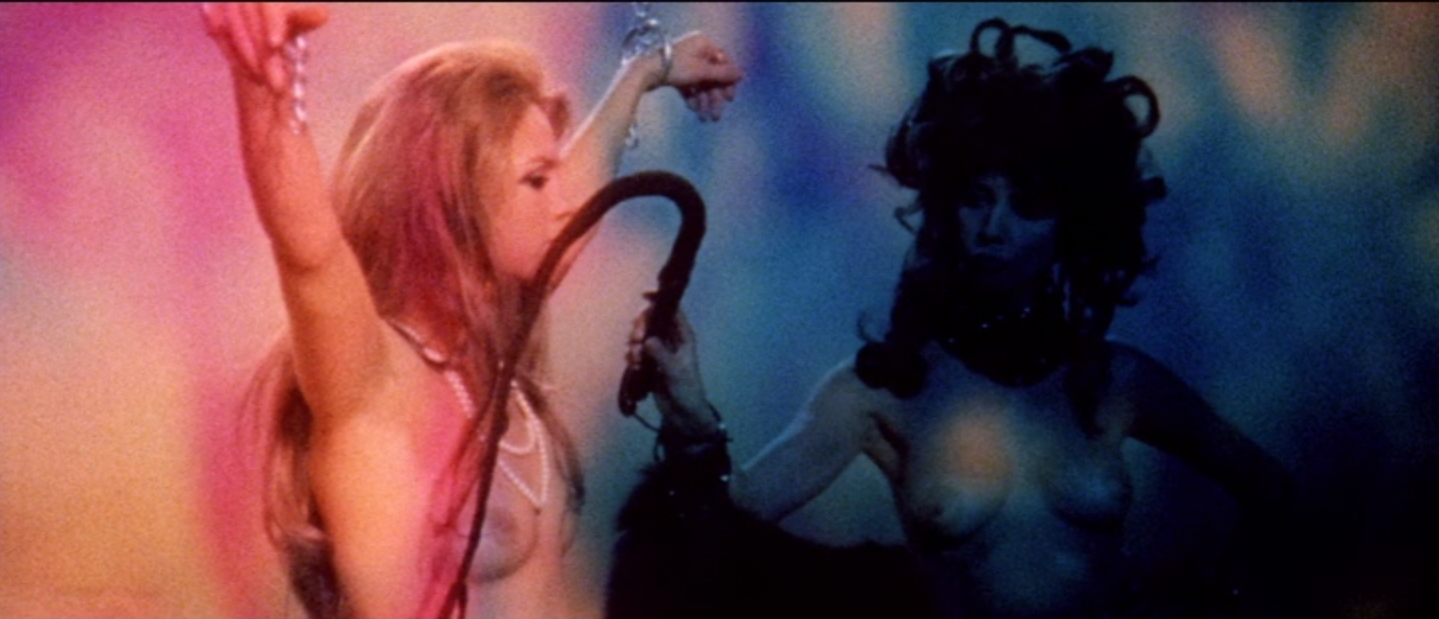








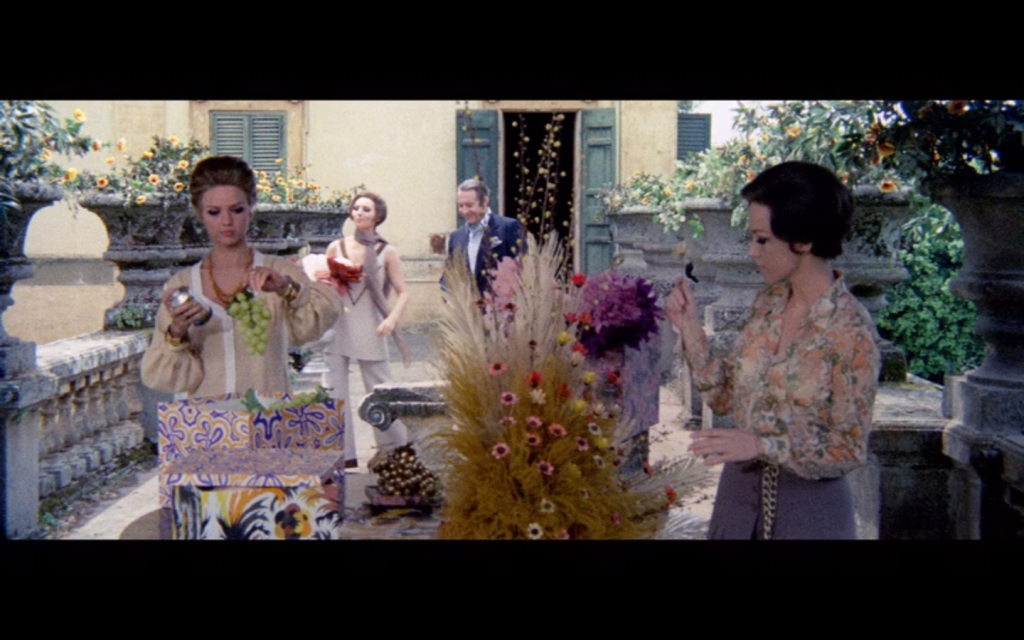
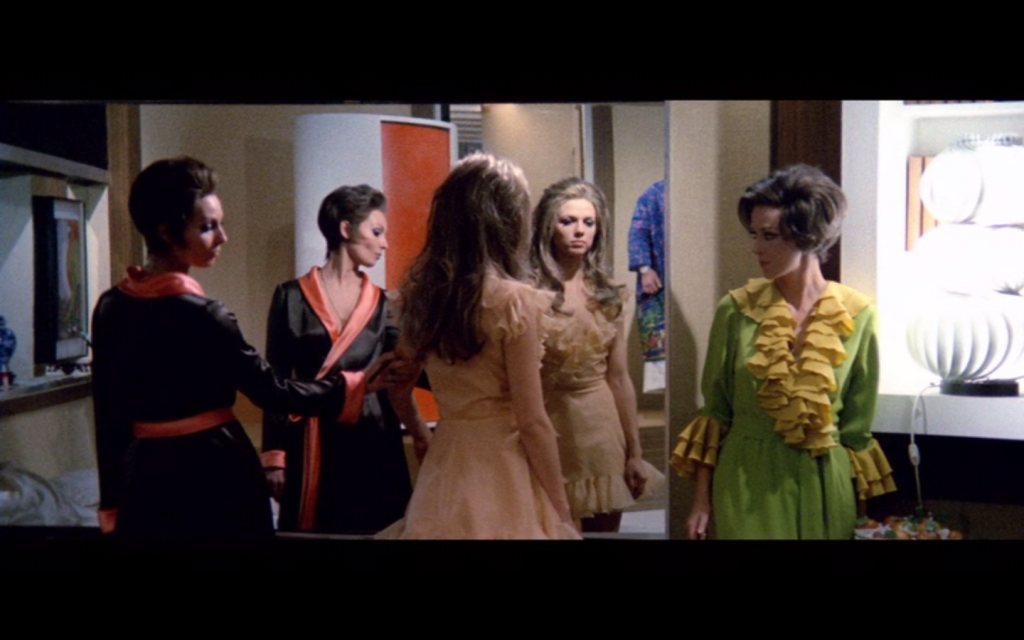




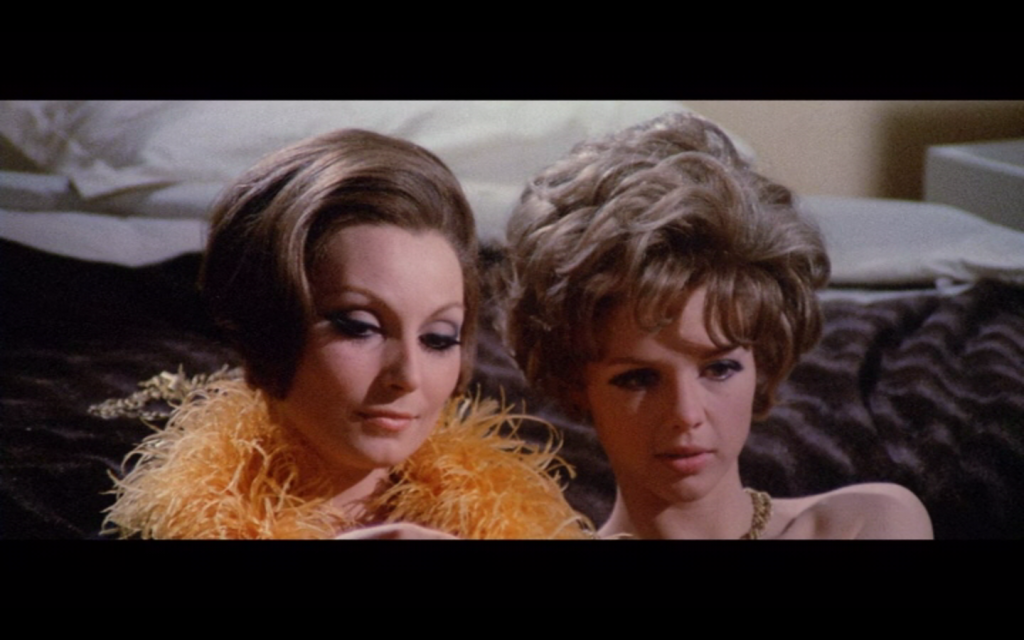



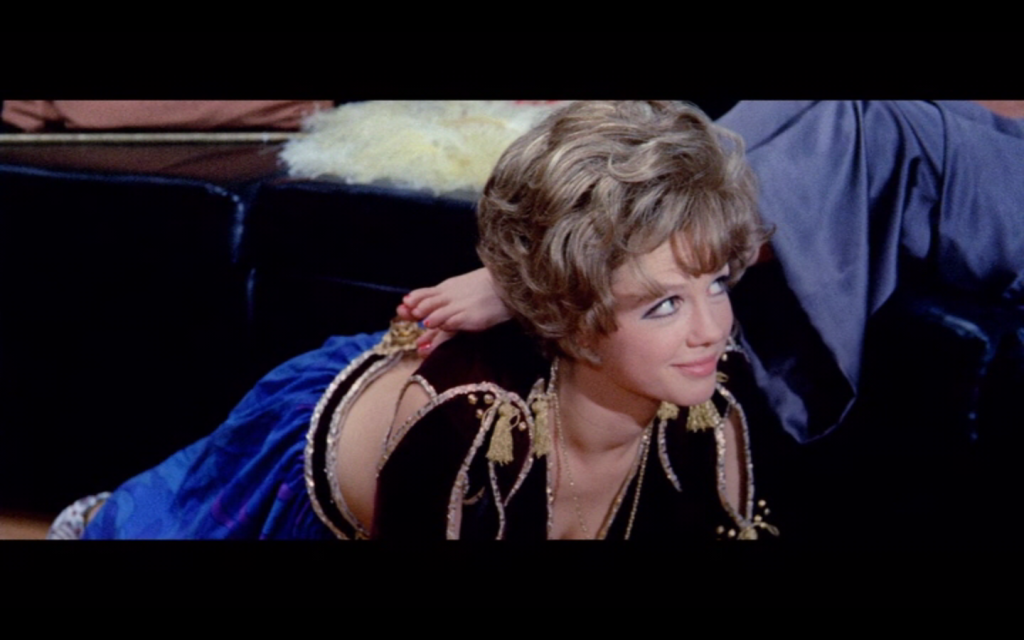


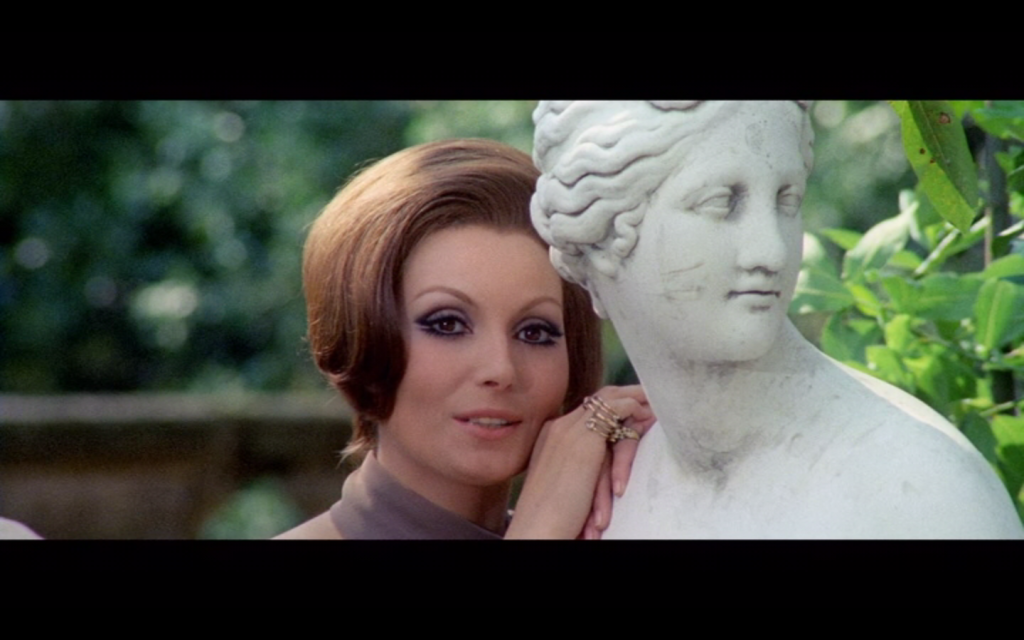
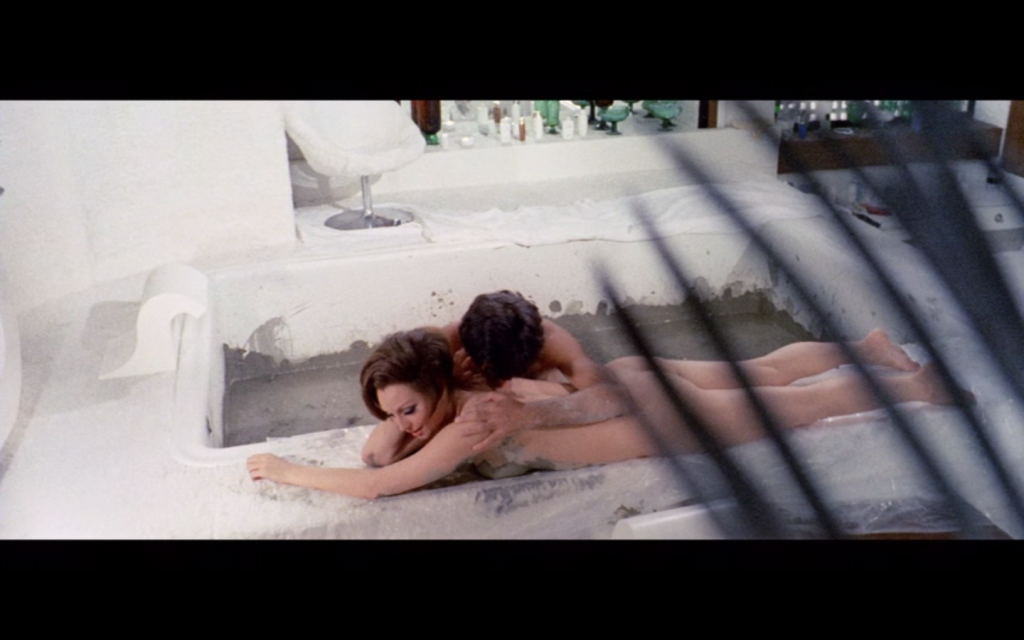
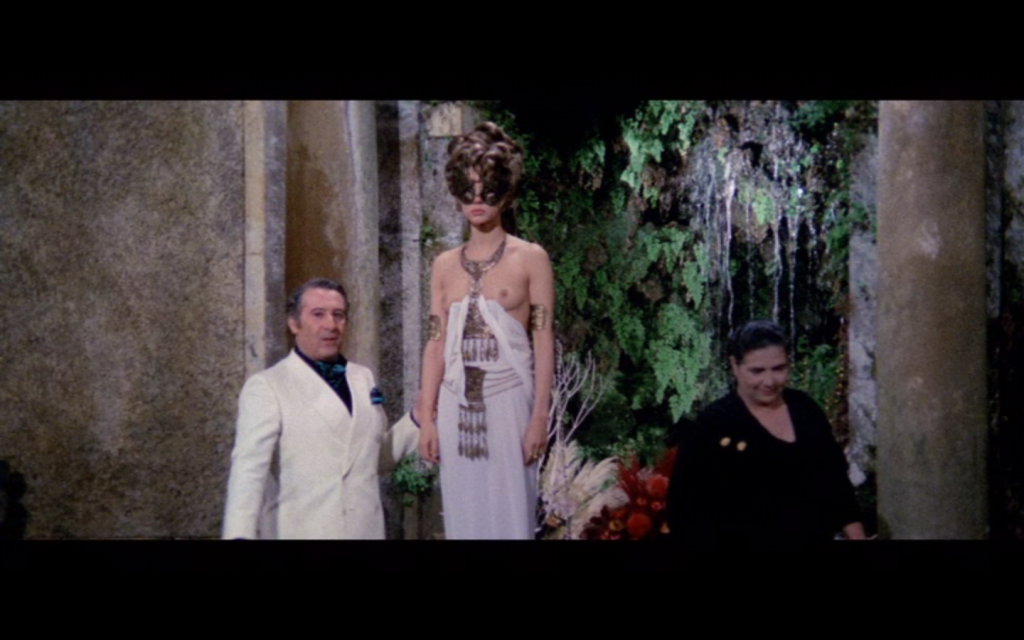


This looks even more fascinating than “Femina Ridens”! Thank you for sharing your thoughts on it. 🙂
LikeLiked by 1 person
You are welcome. I go back and forth on which of the three is the “best” myself. I think Regina is the most thought provoking, I identify the most with Matriarca but Femina is what started it all for me, so it will always be special for that reason.
LikeLiked by 1 person
Thank you for explaining! Well, after a little thought, your third reason clinches it for me. I’ll stick to my original choice and watch “Femina” when the time is right. 😉
LikeLike
As I told you in our conversation earlier these films deal with subjects and interests so completely foreign to me that I cant fathom or comprehend how or why any sane person would have an interest in them. I’m sure your thoughts are reasonable and make sense to people who can understand the subject matter. That is just not me. I just have no interests or desires that match up with the themes of any of these movies. You are entitled to your own thoughts and interests and as a libertarian I want you to be free to think and act in any ways that you chose just so long as you respect the rights of others to think and act differently. I really don’t have any more I can say about this. You are a very talented writer and I respect your communication skills. It is no reflection on your writing skills that I can not grasp or become interested in these subjects.
LikeLike
Ok Ron, you wonderful old man 😀
LikeLike